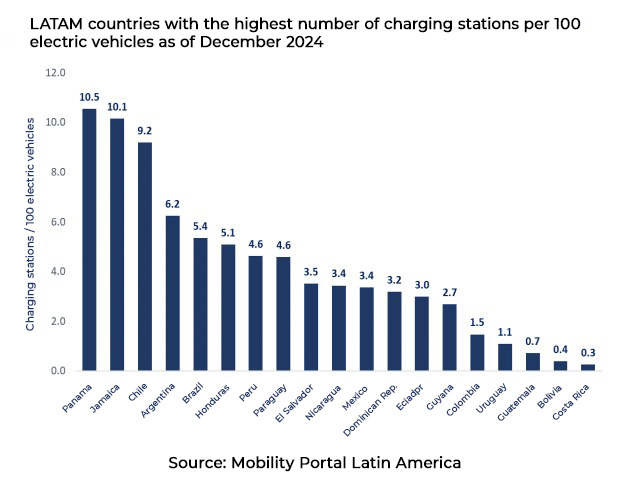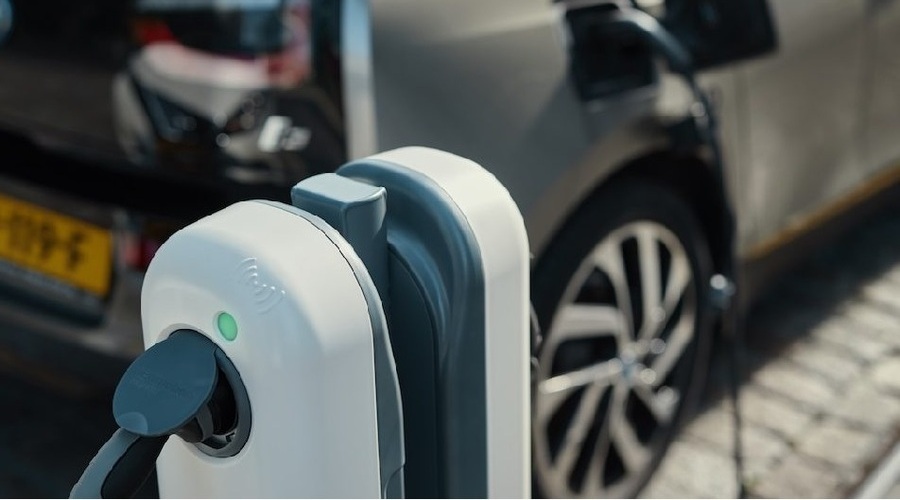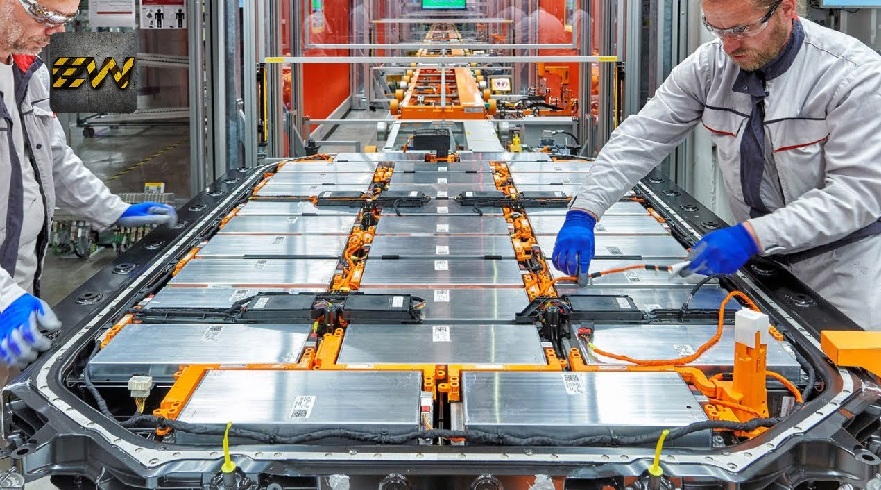Chile is facing a growing gap between the electric vehicle fleet and the charging infrastructure, which could slow down the momentum of electromobility in the country.
According to a report from the Latin American Energy Organization (OLADE), Chile is among the countries with the most charging points per electric vehicle in Latin America.
In 2024, Chile ranked as the third country with the most charging stations per 100 electric vehicles, with 9.2 stations. This figure is positive in relative terms, as countries like Panama and Jamaica lead the region with 10.5 and 10.1 stations, respectively.
The EV/CP ratio (electric vehicles per charging point) in Chile, although favourable compared to the regional average, shows a negative trend: the electric vehicle fleet is growing much faster than public charging infrastructure.

Ignacio Rivas, Director of Programs at the Sustainable Mobility Centre (CMS), states to Mobility Portal Latin America: “More than an optimal number, what’s crucial is monitoring the trend. Internationally, the most accepted indicator for measuring charging infrastructure deployment is the electric vehicle per public charging point ratio (EV/CP).”
He adds: “A low value in this ratio indicates greater availability of charging infrastructure per vehicle, which translates to better conditions for users.”
Gap between electric vehicle fleet and charging infrastructure in Chile

In 2024, the electric vehicle fleet in Chile experienced significant growth, driven in part by government incentives and the increased availability of affordable models.
However, public charging infrastructure has not kept pace.
This creates a major mismatch, with around 213 out of the country’s 346 municipalities (roughly two-thirds of Chile’s territory) currently lacking a single public charging point.
“The rapid growth of the electric vehicle fleet is positive, but it is beginning to create tensions, because the charging infrastructure is not keeping up,” comments Rivas.
“What this means is that, even though we have a favourable EV/CP ratio in Chile, the territorial gap remains a major challenge. The lack of chargers in many municipalities is limiting the national connectivity of electric mobility.”
From the users’ point of view, this translates into lower availability and reliability of the charging network, intensifying “range anxiety” and discouraging the adoption of electromobility.
OLADE projections for Chile in Latin America

The OLADE technical report on electric mobility in Latin America and the Caribbean provides a broader view of Chile’s position within the regional context.
According to the 2024 figures, Latin America has experienced steady growth in the number of electric vehicle chargers, but the gap between countries with advanced infrastructure and those lagging behind is noticeable.
The number of charging points per electric vehicle remains one of the key indicators for evaluating the health of infrastructure in the region.
Diland Castro, Leader of the Charging Infrastructure Study Area at CMS, adds in a conversation with Mobility Portal Latin America: “The problem is not only the number of chargers but also the distribution.”
“Two-thirds of Chile have no access to public charging points, creating significant disconnect zones. The charging infrastructure must be distributed more equitably, not just concentrated in large cities.”
The OLADE report also emphasises that, although Chile maintains a favourable EV/CP ratio, the trend is deteriorating as electric vehicle adoption grows faster than the expansion of charging infrastructure.
“Charging infrastructure must go hand in hand with the number of electric vehicles entering the market. If there is no parallel expansion of chargers, the electromobility market could stagnate,” says Castro.
According to data from the Superintendence of Electricity and Fuels (SEC), by May 2025, Chile had installed a total of 1,214 public charging points, with a total installed power capacity of 14.36 MW.
Of these, 92 are semi-rapid chargers, 75 are fast chargers, and 42 are ultra-rapid chargers. The geographical distribution shows a significant concentration in the Metropolitan Region, with 778 charging points, representing 64% of the national total.
DISCOVER MOBILITY PORTAL DATA
Discover Mobility Portal Data, a new exclusive market intelligence platform offering reliable data and key reports to support smart decision-making across the automotive sector — covering both combustion and electric vehicles, as well as charging infrastructure.
Research, trend analysis, and neatly organised statistics presented with clarity and precision, alongside up-to-date insights — all just one click away. With Mobility Portal Data, good decisions are on the horizon.
READ MORE
-
Solidstudio Reveals: Why AI Is Now an “Essential Requirement” for E-Mobility
In a rapidly evolving e-mobility sector, Solidstudio highlights artificial intelligence as a key tool for optimising processes, preventing fraud, and enhancing user experience. Discover how this technology has become an essential requirement for businesses looking to scale and stay competitive.
-
Data Reveals: Battery Boom Could Create 300,000 Jobs by 2030
According to the latest data, the battery industry already supports over 62,000 jobs and could generate between 200,000 and 312,000 by the end of the decade. However, none of this is guaranteed. So, what is needed to keep the momentum going?
-
hylane Expands: E-Truck Rental Service Now Available in the Netherlands
The Netherlands is known as the commercial centre of Europe – especially due to the port of Rotterdam. The expansion is a milestone in hylane’s mission to make road transport more sustainable across Europe.









